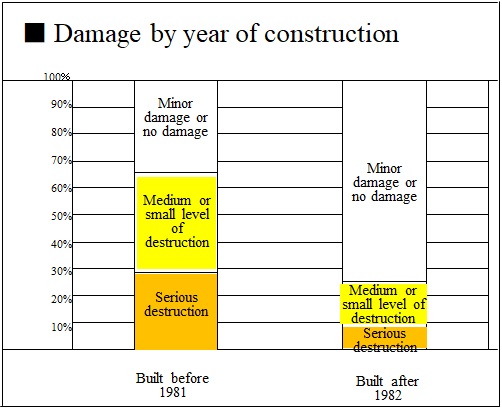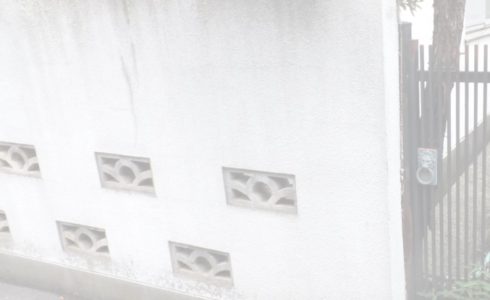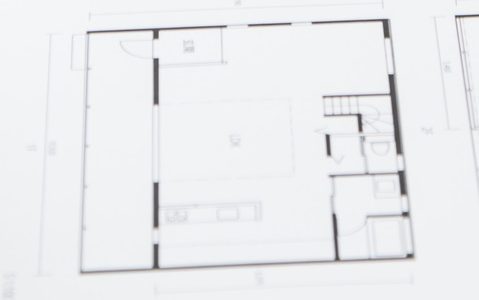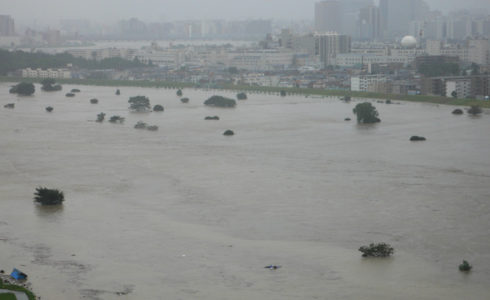
The age of the building and its strength against earthquakes
When buying a second-hand building, it is important to know when it was built. The reason for this is that the seismic performance standards for buildings under Japanese law have been progressively raised. The most notable change was made on 1 June 1981, and buildings for which a building permit was issued before this date are referred to as “buildings built to the old seismic resistance standard“, while buildings for which a building permit was issued after 1 June 1981 are referred to as “buildings built to the new seismic resistance standard“.
As the document (in Japanese only) on the Ministry of Land, Infrastructure, Transport and Tourism’s website is important, we have translated the contents into English and put it below.
A survey of buildings damaged in the Great Hanshin Earthquake of 1995 showed that nearly 30% of buildings built to the old earthquake resistance standards were badly damaged, while less than 10% of buildings built to the new standards were badly damaged.




According to a survey by the National Police Agency, of the 5,502 people who died, 4,831 (88%) died of crushing injuries caused by collapsed houses and furniture, and 550 (10%) died of fire-related causes.
The majority of the deaths were caused by collapsed buildings, and the damage was concentrated in buildings built before 1981.
In response to this, a system of seismic retrofitting was established, and the safety of wooden and steel buildings has been improved by gradually increasing the seismic standards.
It is advisable to be aware of this history before purchasing an existing building.
For more information on the damage caused by the Great Hanshin Earthquake, please see the video on our blog below.





